Present architectural digital interpretation tools implement a visualization strategy that reflects the building’s form through the use of plans, sections, elevations, and perspective views. A study presented in the journal Architecture considers the use of Algorithmic Design in Virtual Reality to facilitate the design stage of planning.
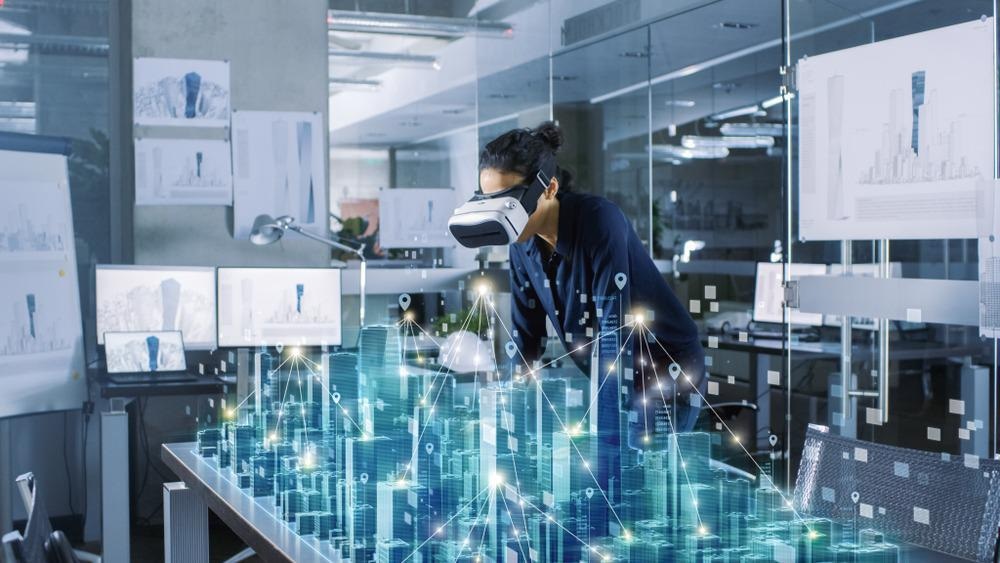
Study: Algorithmic Design in Virtual Reality. Image Credit: Gorodenkoff/Shutterstock.com
Virtual Reality (VR) technology can significantly improve modeling and theorization processes by allowing users to acquire the building and consider it at its natural scale. However, despite the benefits VR has for architectural design, it has a significant drawback: major aspects of ideas proposed during a VR session cannot be incorporated or tested during that session. In fact, most strategies to change the design, with or without VR, are restricted to manual model manipulation and, as a result, cannot have a large influence on the design.
Algorithmic Design (AD) addresses this issue by describing the model algorithmically, allowing parametric changes to the design while preserving its internal logic, guaranteeing the uniformity of the modified design. However, because AD has yet to be used in conjunction with VR, designers are unable to update the algorithmic descriptions of their models while engrossed in a Virtual Environment (VE).
To improve this issue, researchers propose Algorithmic Design in Virtual Reality (ADVR) in this paper, a workflow based on the use of algorithms to portray designs that allows for comprehensive design changes while engrossed in VR. Architects can instantly experiment with design variations using ADVR without departing the VE.
Figure 1 depicts this scenario for the Astana National Library (ANL) project. This building, designed by Bjarke Ingels Group in 2008, is in the shape of a 3D Moebius strip, a rather complex form that can only be understood through projections.

Figure 1. Rendered ANL model in Rhinoceros 3D shown in the 4 default viewports (top, perspective, front, and right view). Image Credit: Castelo-Branco and Leitão, 2022
AD is the process of creating architectural designs using algorithmic descriptions that are then executed as computer programs. Figure 2 depicts multiple varieties of the ANL model obtained by varying the radius of the central plaza and the torsion of the building’s facade.
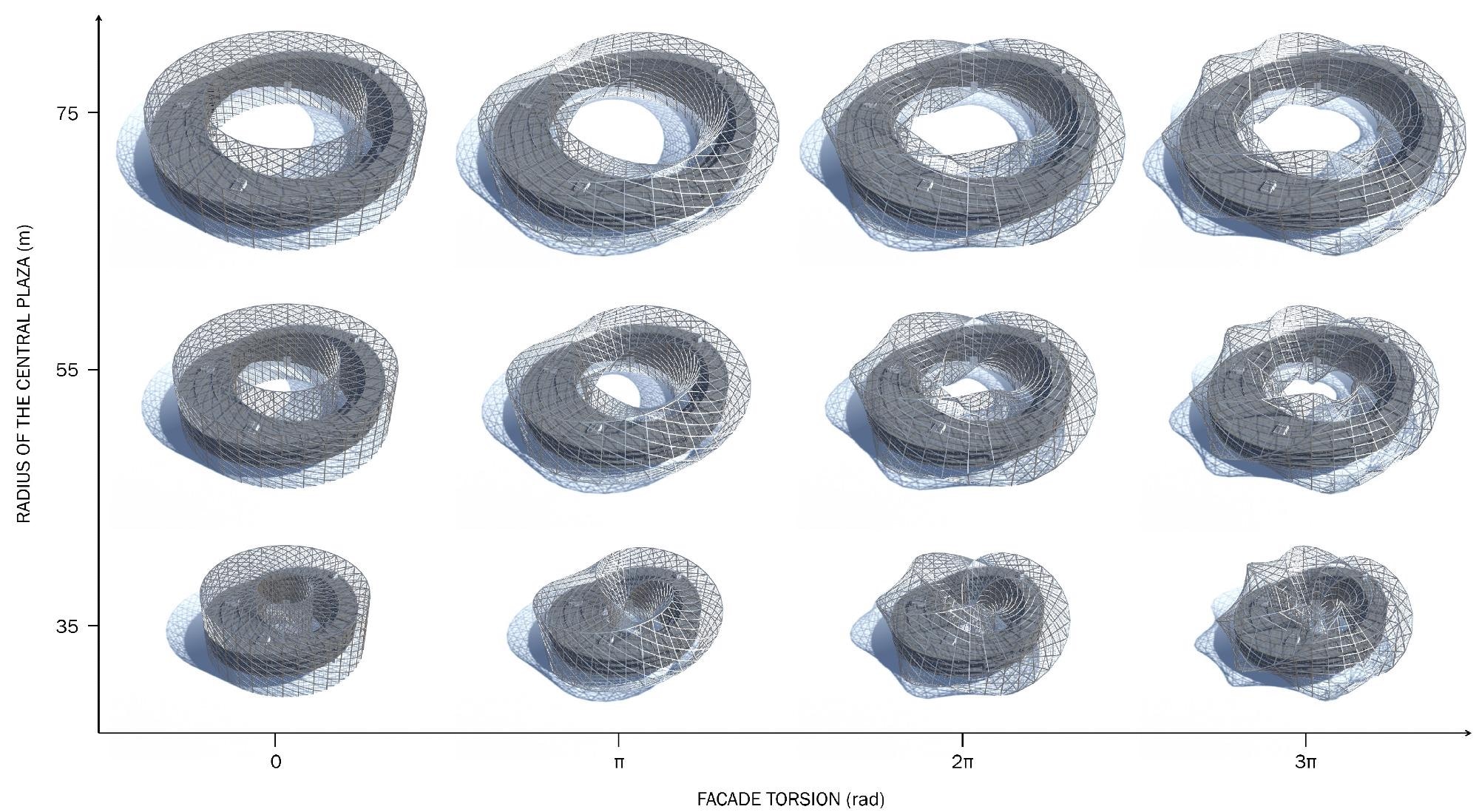
Figure 2. Variations of the ANL model produced by changing selected parameters in the program: radius of the central plaza and the building’s facade torsion. Image Credit: Castelo-Branco and Leitão, 2022
Live coding is a method that involves creating interactive programs on the go. In the case of virtual reality, researchers visualize the use of live coding in a scenario in which the architect can code the algorithmic description of the model alongside the subsequent geometry.
The idea of using VR for coding is not new. The Primitive tool, for example, has demonstrated the use of virtual reality (VR) for collaborative software analysis visualization. VR-specific coding applications have also been created.
Methodology
Although it is feasible to manipulate code in VR using the interaction techniques provided in visual programming, the intricacy of the models that gain the most from immersive visualization makes this an unviable approach.
Researchers propose that a textual-based AD methodology, which permits large design revisions out of the box, be combined with VR, an innately interactive and immersive medium, to enhance the design experience. The following describes ADVR, a way of interacting with textual AD programs and models in virtual reality. This inquiry used the following measures to attain the specified objective:
- Studying existing solutions for the integration of parametric solutions in VR.
- Developing a methodology that integrates textual AD in VR.
- Outlining the required building blocks to implement the methodology.
- Evaluating the methodology with exploratory user testing.
Architects use an Interactive Development Environment (IDE) or a programming editor to input the coding commands into the AD tool, which then builds the associated model.
The VE developers will then assess the results and, if necessary, alter the algorithmic description, completing the cycle.
Certain components are needed to build an effective coding environment in the VE that will support this approach.
Results and Discussion
Researchers began by examining the usefulness of virtual reality in the architectural development process, both from the architect’s and the client’s perspectives, excluding any potential coding problem from the equation in this phase.
The first exercise—time gains—was carried out by a single subject, an architect who was familiar with the programming language, the AD tool, and the ANL project. A time graph was used to summarize the findings. As indicated in Figure 8, the second exercise, interaction, included 21 individuals from two diverse backgrounds: architecture and computer science.

Figure 8. ADVR workflow: on the left, the VE where the model, the IDE and the responsive virtual keyboard are visible; on the right, the architect typing in the physical keyboard. Image Credit: Castelo-Branco and Leitão, 2022
The variables covered in these evaluations are depicted in Figure 9.
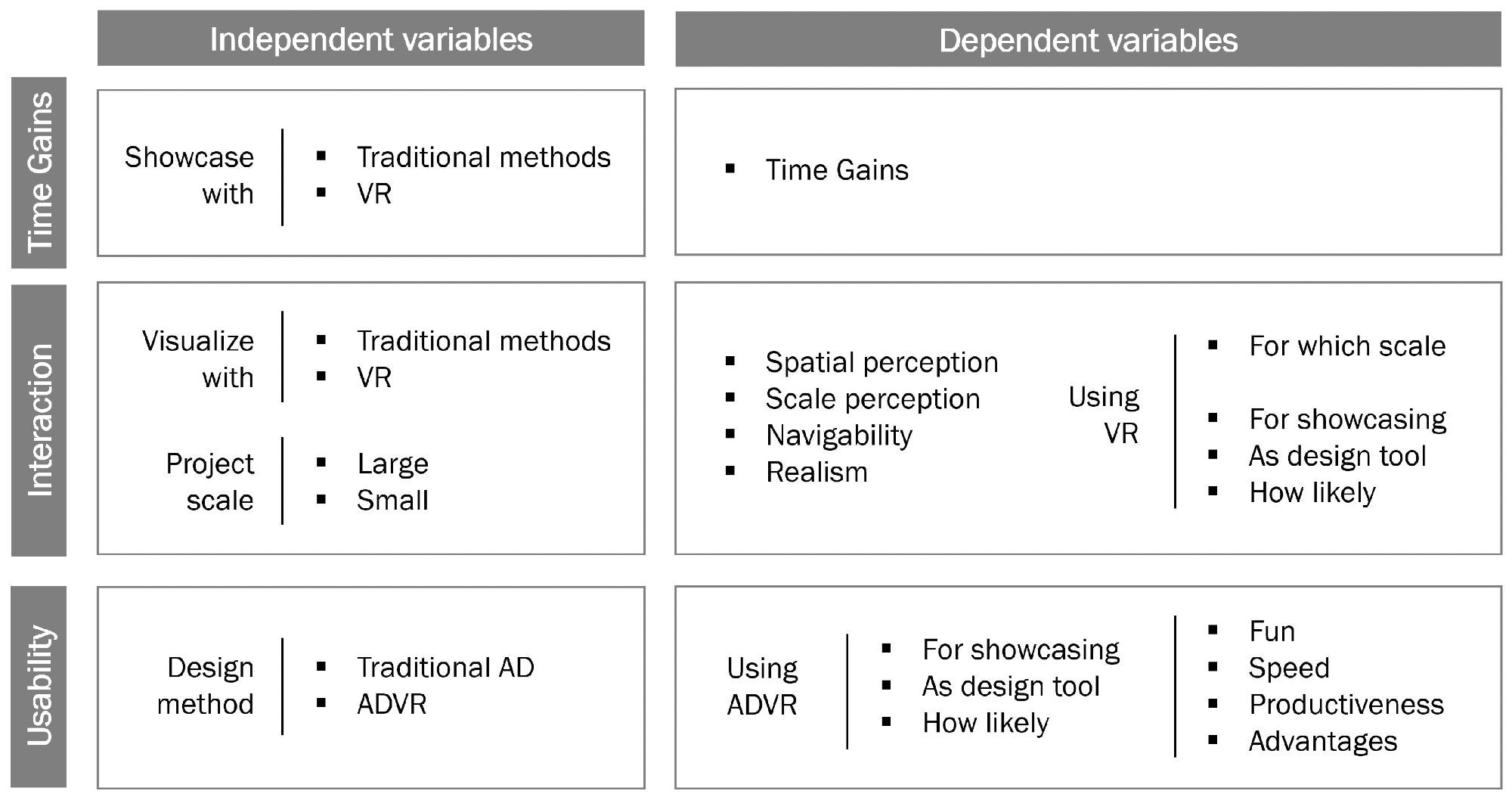
Figure 9. ADVR workflow: on the left, the VE where the model, the IDE and the responsive virtual keyboard are visible; on the right, the architect typing in the physical keyboard. Image Credit: Castelo-Branco and Leitão, 2022
A group of architects was tasked by the researchers with making feasible changes to the ANL model. Figure 10 shows the suggested adjustments and the time it took for a single architect to put them in place.
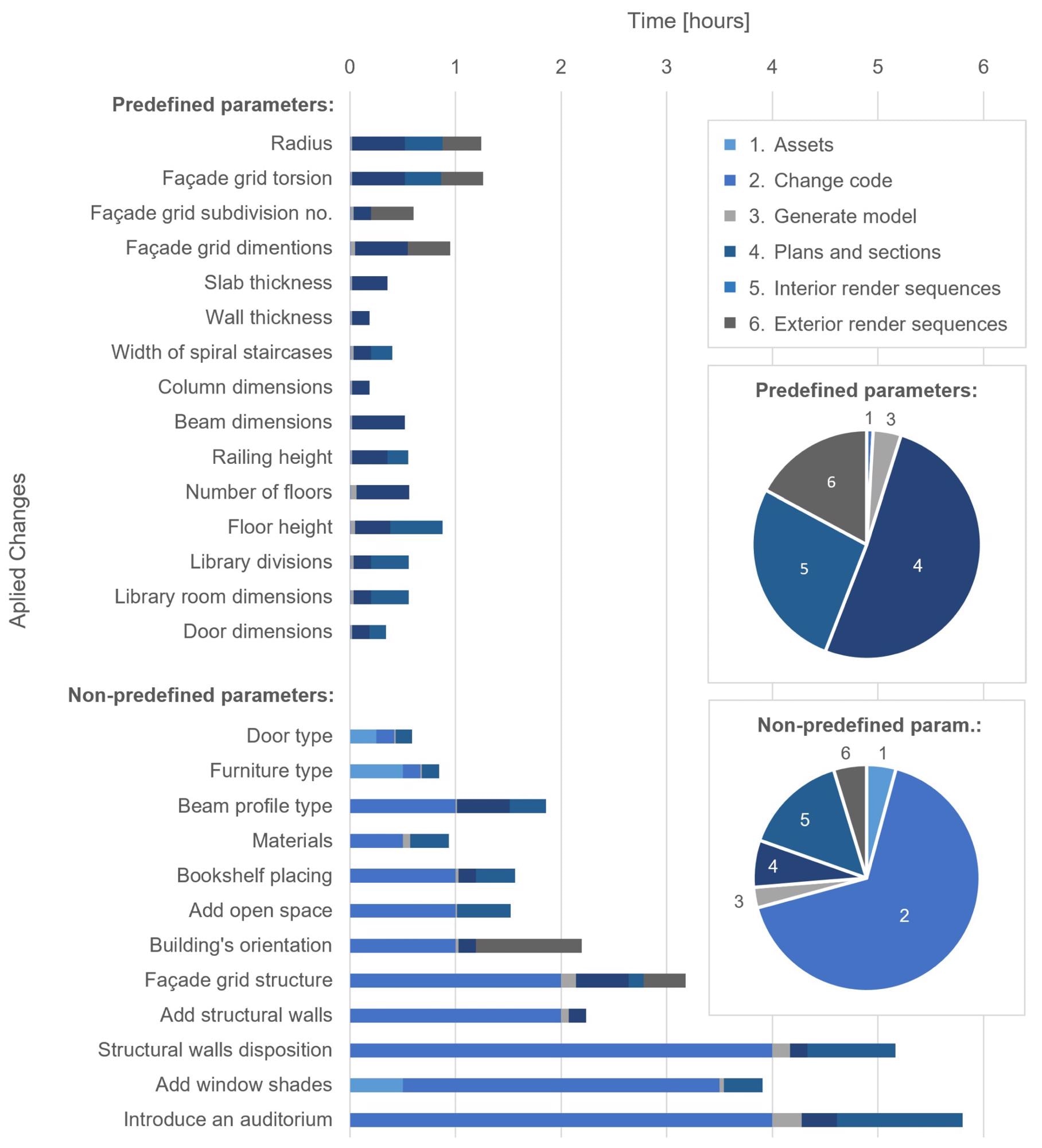
Figure 10. Time graph for the changes applied to the ANL mode: time spent on each of the 6 tasks for the case of predefined (on top) and non-predefined parameters (on the bottom). Image Credit: Castelo-Branco and Leitão, 2022
Figure 10 shows the total amount of time spent on each step for the two sets of adjustments applied as pie charts. Small changes to the program are required for cosmetic improvements like altering furniture items, as illustrated in Figure 11, but the majority of the effort is spent gathering and altering assets and performing renders.
The insertion of an auditorium in the library volume (Figure 12), which necessitated breaking the regularity of the wall distribution in that volume, was the most striking case in the series of changes.
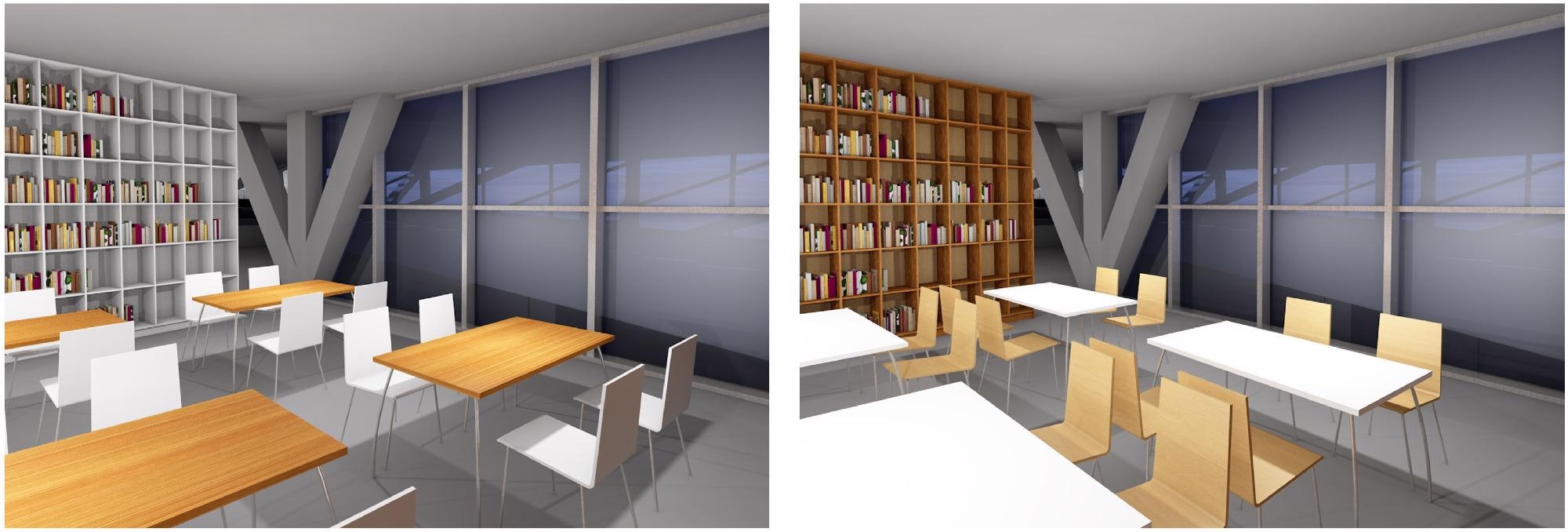
Figure 11. Time graph for the changes applied to the ANL mode: time spent on each of the 6 tasks for the case of predefined (on top) and non-predefined parameters (on the bottom). Image Credit: Castelo-Branco and Leitão, 2022
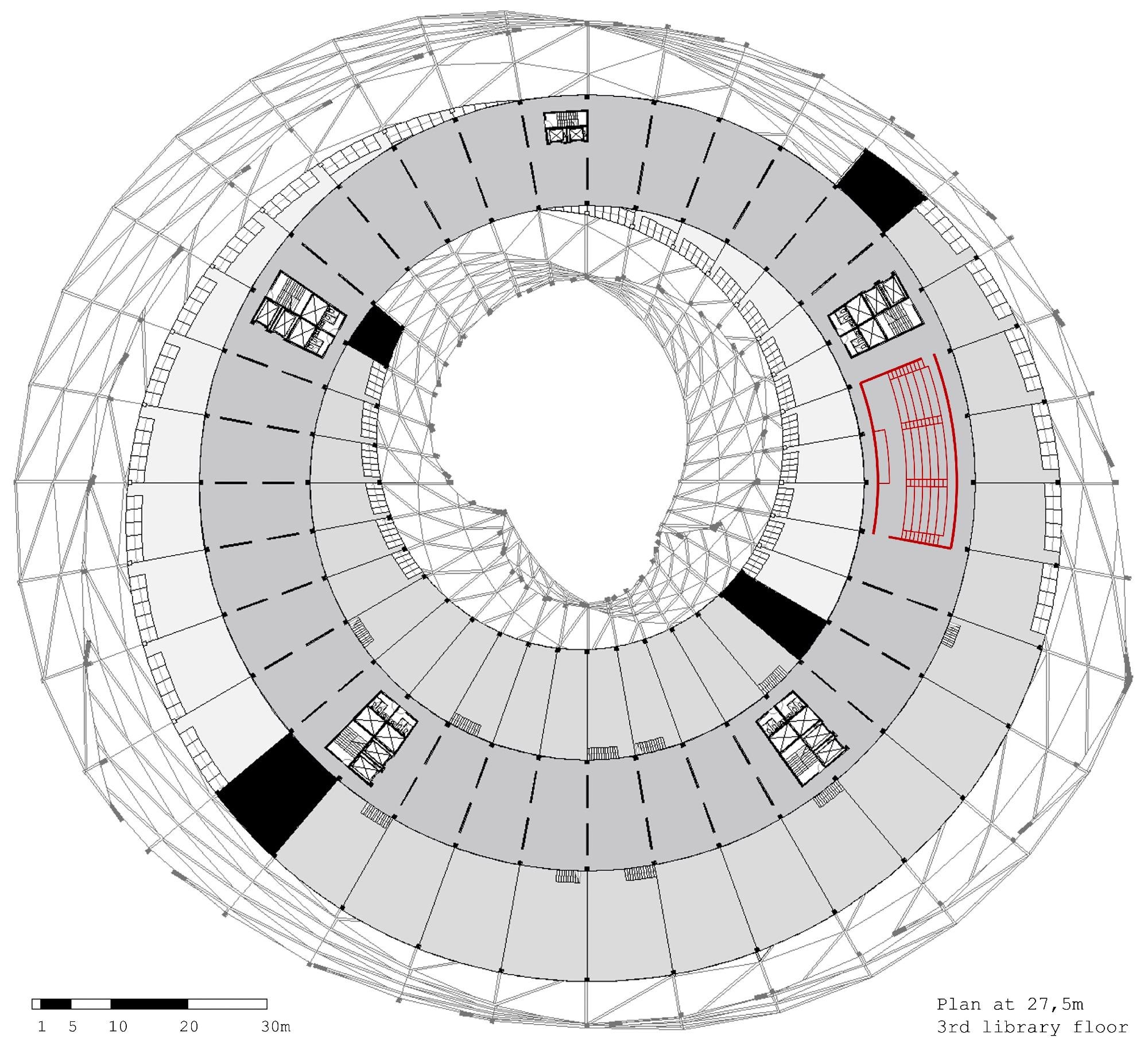
Figure 12. Time graph for the changes applied to the ANL mode: time spent on each of the 6 tasks for the case of predefined (on top) and non-predefined parameters (on the bottom). Image Credit: Castelo-Branco and Leitão, 2022
The researchers next invited a group of volunteers to examine plans and sections and produce images of a large-scale and small-scale project. Figure 13 depicts the process.
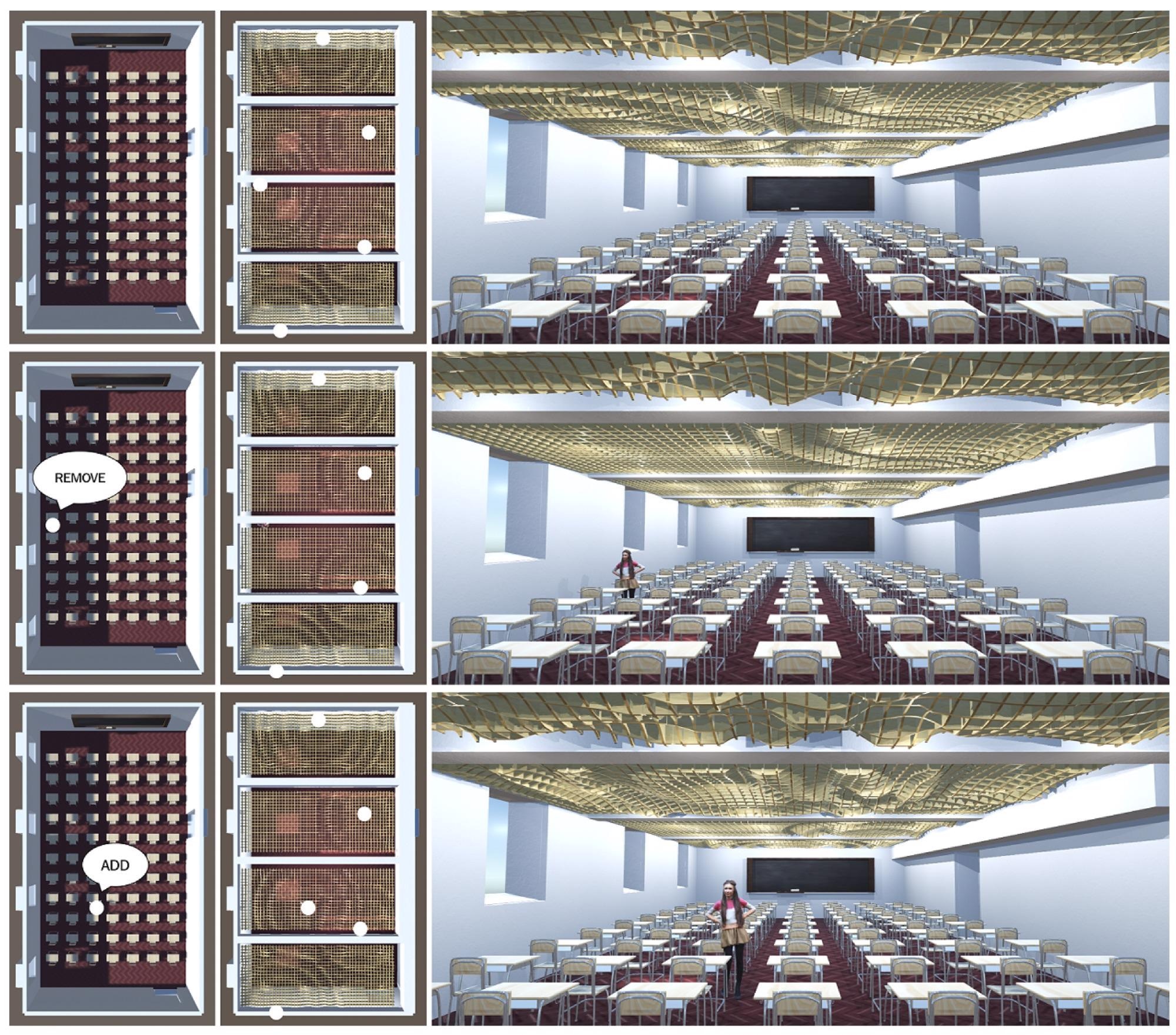
Figure 13. From left to right: top view of the classroom (1) with the user’s location and (2) showing the intervention and the active attractors’ location; and (3) render of the resulting solution. From top to bottom: (1) default solution; (2) removal of an attractor; and (3) addition of an attractor. Image Credit: Castelo-Branco and Leitão, 2022
Figure 14 and Figure 15 demonstrate the statistical analysis of the responses to the inquiry: the graph indicates the mean result and standard deviation of the responses for each variable. The test group consisted of 21 individuals with various backgrounds, including young architects, architecture students, and computer science engineering students.
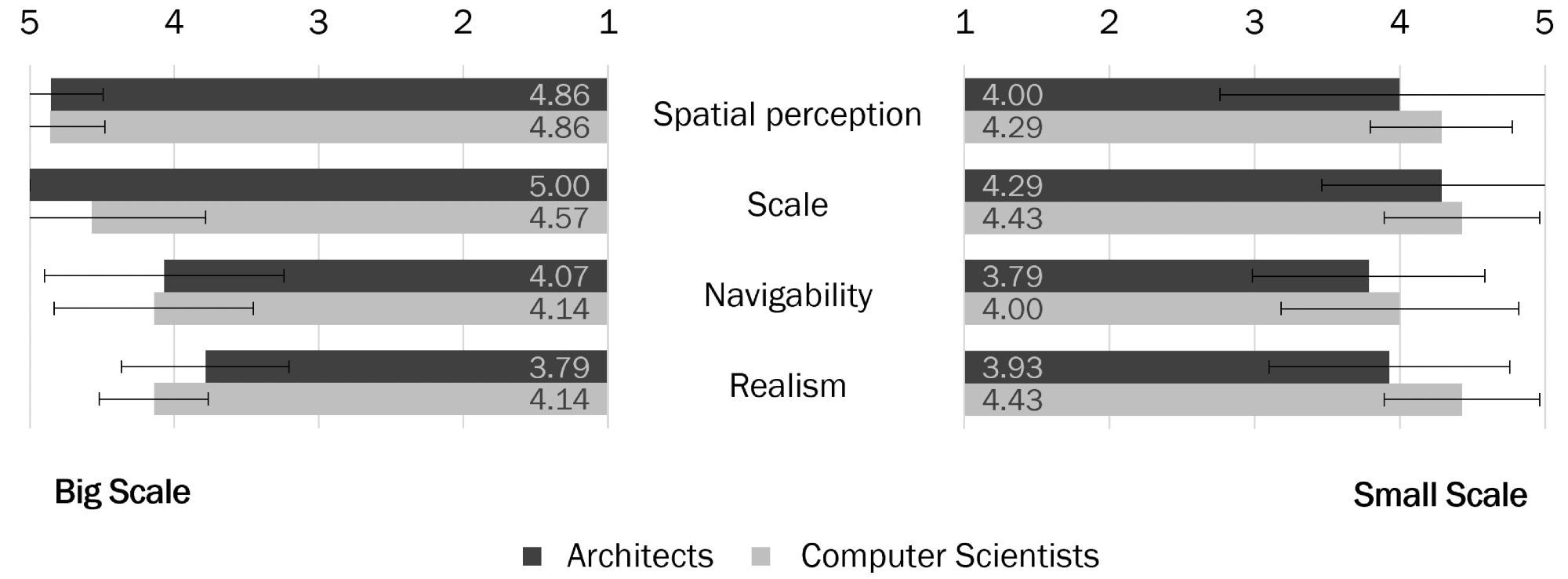
Figure 14. User study results on VR interaction with a small and a large-scale architectural project: scale, spatial perception, navigability, and realism. Image Credit: Castelo-Branco and Leitão, 2022

Figure 15. User study results on VR interaction with a small and a large-scale architectural project: showcase, design, and use. Image Credit: Castelo-Branco and Leitão, 2022
The previous challenges were designed to separate the benefits of virtual reality from the difficulties of coding. In this final exploratory activity, researchers assessed the ADVR methodology’s perceived usability among designers.
Figure 16 depicts (on the left) some of the pictures included in the briefing for the exercise, as well as (on the right) the perspective the users would have if they completed it.
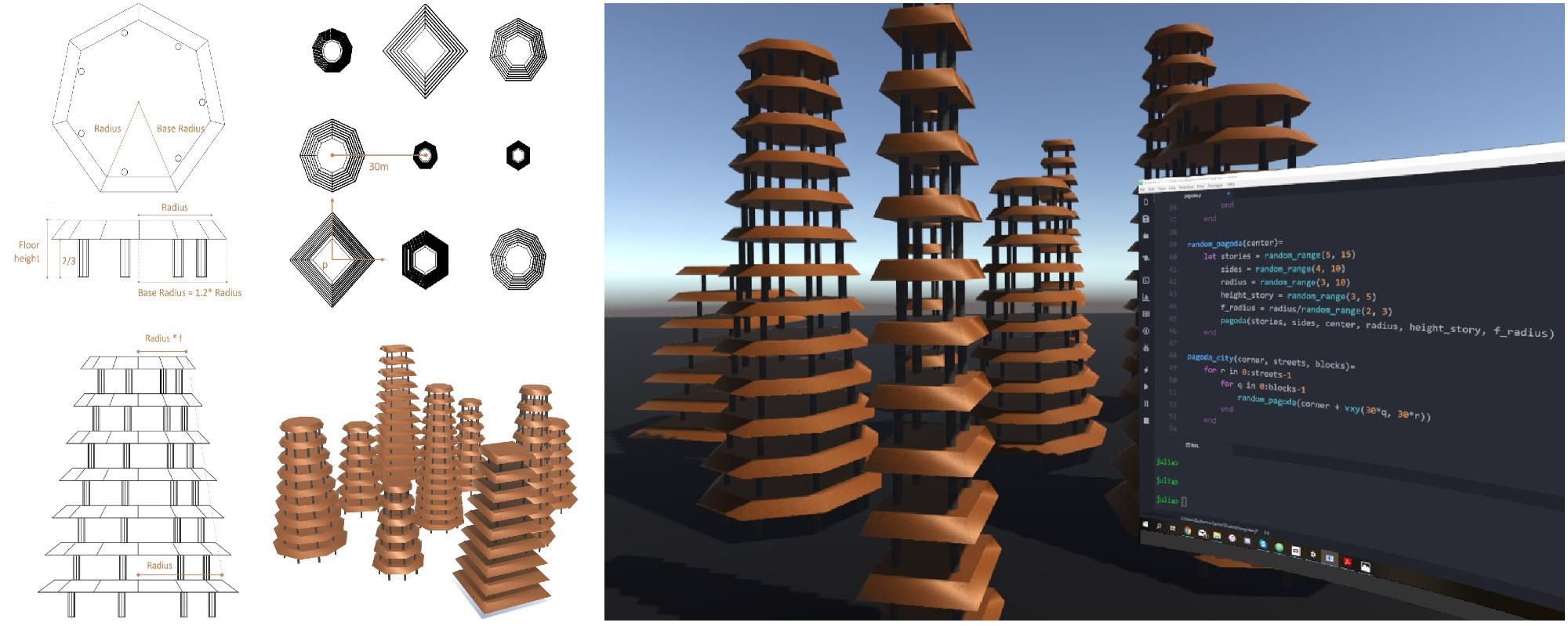
Figure 16. Random pagoda city exercise using the ADVR workflow: on the left, images from the briefing provided and, on the right, the goal of the exercise. Image Credit: Castelo-Branco and Leitão, 2022
This experiment also included a survey, the results of which are summarized in Figure 17.
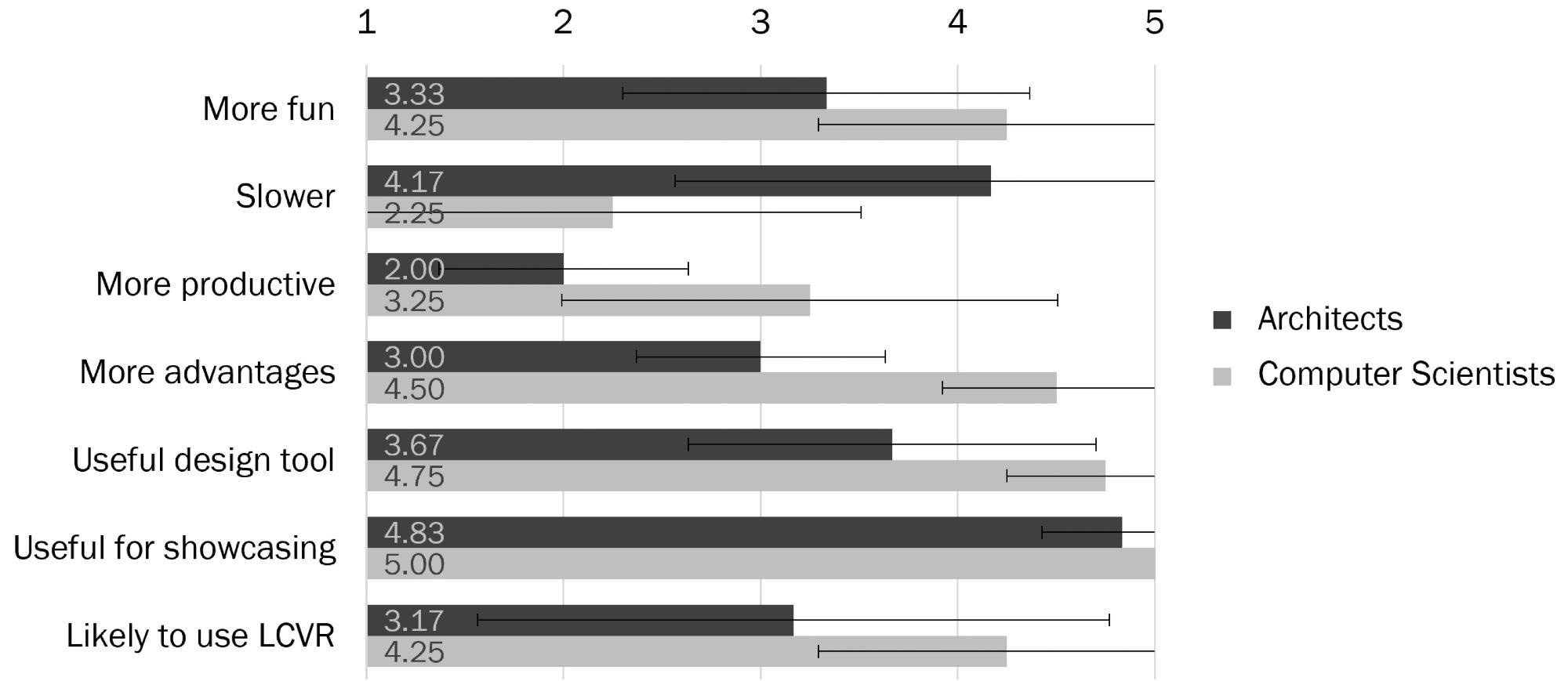
Figure 17. User study results on the usability of the ADVR workflow. Image Credit: Castelo-Branco and Leitão, 2022
Researchers presented ADVR as a way for live coding AD in VR in this study. Models were generated and updated in real-time as architects changed the mathematical descriptions of their plans, thanks to a gaming engine. Researchers were able to take AD a step further by combining it with virtual reality, resulting in a realistic live coding experience.
Researchers can confirm that incorporating VR into the AD paradigm can enable a more meaningful interaction with the created model, based on the results of the current experimental analysis. In this way, ADVR has the potential to improve the architectural design experience and communication.
Live coding provides instant feedback on alterations in algorithmic descriptions and, when integrated with virtual reality, encourages designers to take more exploratory design actions.
According to the findings, researchers believe that ADVR, as it is now implemented, is not yet suited for early design stages as it still has disadvantages when compared to standard programming workflows, such as slower typing speed for users who cannot touch type.
Conclusion
An Algorithmic Design in Virtual Reality (ADVR) approach was proposed in this study, which entails live coding Algorithmic Design descriptions in Virtual Reality.
Researchers can confirm that combining VR with AD creates a more meaningful engagement with the generated model. However, AD requires live coding to offer the instant feedback required by VR.
The ADVR approach will be improved by the researchers, making it simpler to use and capable of helping the early stages of design processes.
Journal Reference:
Castelo-Branco, R., & Leitão, A. (2022) Algorithmic Design in Virtual Reality. Architecture, 2(1), pp. 31–52. Available Online: https://www.mdpi.com/2673-8945/2/1/3/htm
References and Further Reading
- Gobbetti, E & Scateni, R (1998) Virtual reality: Past, present and future. Studies in Health Technology and Informatics, 58, pp. 3–20.
- Portman, M., et al. (2015) To go where no man has gone before: Virtual reality in architecture, landscape architecture and environmental planning. Computers, Environment and Urban Systems, 54, pp. 376–384. doi.org/10.1016/j.compenvurbsys.2015.05.001.
- Sutherland, I E (1965) The Ultimate Display. Proceedings of IFIP Congress, 2, pp. 506–508.
- Whyte, J (2003) Industrial applications of virtual reality in architecture and construction. Journal of Information Technology in Construction: ITcon, 8, pp. 43–50.
- Dorta, T & Pérez, E (2006) Immersive Drafted Virtual Reality: A new approach for ideation within virtual reality. In Proceedings of the 25th Annual Conference of the Association for Computer Aided Design in Architecture (ACADIA), Louisville, Kentucky, USA, 12–15 October; pp. 304–316.
- Gu, N., et al. (2011) Technological advancements in synchronous collaboration: The effect of 3D virtual worlds and tangible user interfaces on architectural design. Automation in Construction, 20, pp. 270–278. doi.org/10.1016/j.autcon.2010.10.004.
- Schnabel, M A (2011) The immersive virtual environment design studio. In Collaborative Design in Virtual Environments; Wang, X., Tsai, J.J.H., Eds.; Intelligent Systems, Control and Automation (ISCA): Science and Engineering; Springer: Dordrecht, The Netherlands, 48, pp. 177–191.
- Wang, X (2007) Mutually augmented virtual environments for architectural design and collaboration. In Proceedings of the 12th International Conference on Computer Aided Architectural Design Futures (CAAD Futures), Sydney, Australia, 11–13 July 2007; Springer: Dordrecht, The Netherlands; pp. 17–29.
- Wang, P., et al. (2018) A Critical Review of the Use of Virtual Reality in Construction Engineering Education and Training. International Journal Environmental Research and Public Health, 15, p. 1204. doi.org/10.3390/ijerph15061204.
- Davila Delgado, J. M., et al. (2020) A research agenda for augmented and virtual reality in architecture, engineering and construction. Advanced Engineering Informatics, 45, p. 101122. doi.org/10.1016/j.aei.2020.101122.
- Alizadehsalehi, S., et al. (2020) From BIM to extended reality in AEC industry. Automation in Construction, 116, p.103254. doi.org/10.1016/j.autcon.2020.103254.
- Anderson, L., et al. (2003) A virtual environment for conceptual design in architecture. In Proceedings of the Eurographics Workshop on Virtual Environments (EGVE), Zurich, Switzerland, 22–23 May 2003; Association for Computing Machinery: New York, NY, USA; pp. 57–63.
- de Klerk, R., et al. (2019) Usability studies on building early stage architectural models in virtual reality. Automation in Construction, 103, pp. 104–116. https://doi.org/10.1016/j.autcon.2019.03.009.
- Burry, M (2011) Scripting Cultures: Architectural Design and Programming; Architectural Design Primer; John Wiley & Sons, Inc.: West Sussex, UK.
- Terzidis, K (2006) Algorithmic Architecture; Architectural Press: New York, NY, USA.
- Lee, J., et al. (2014) Evaluating Creativity in Parametric Design Processes and Products: A Pilot Study. In Design Computing and Cognition (DCC’12); Gero, J.S., Ed.; Springer: Dordrecht, The Netherlands; pp. 165–183.
- Woodbury, R (2010) Elements of Parametric Design; Routledge: London, UK.
- Davidson, S (2021) Grasshopper: Algorithmic Modeling for Rhino. 2021. Available at: https://www.grasshopper3d.com.
- Alfaiate, P., et al. (2017) Supporting Creativity in the Cloud. In Proceedings of the 37th Annual Conference of the Association for Computer Aided Design in Architecture (ACADIA), Cambridge, MA, USA, 2–4 November; pp. 72–81.
- Rein, P., et al. (2018) Exploratory and Live, Programming and Coding: A Literature Study Comparing Perspectives on Liveness. Program Journal, 3, pp. 1:1–1:33. doi.org/10.22152/programming-journal.org/2019/3/1.
- Panya, D S (2020) A Methodology of Interactive Motion Facades Design through Parametric Strategies. Applied Sciences, 10, p. 1218. doi.org/10.3390/app10041218.
- Autodesk, Inc. Dynamo (2020) Open Source Graphical Programming for Design. Available at: https://dynamobim.org/.
- Prime Software Systems (2019) PRIMITIVE: VR Collaboration for Distributed Teams. Available at: https://primitive.io/.
- James, P (2017) Watch: ‘LogiX’ is an Impressive Multi-User Visual Programming Interface for VR. Available at: https://www.roadtovr.com/watch-logix-impressive-multi-user-visual-programming-interface-vr/.
- Iannini, L. Rumpus. 2016. Available at: https://store.steampowered.com/app/458200/Rumpus
- Schutz, M & Wimmer, M (2019) Live Coding of a VR Render Engine in VR. In Proceedings of the 26th Conference on Virtual Reality and 3D User Interfaces, Osaka, Japan, 23–27 March; pp. 1150–1151.
- Elliott, A., et al. (2015) Virtual reality in software engineering: Affordances, applications, and challenges. In Proceedings of the 37th International Conference on Software Engineering (ICSE), Florence, Italy, 16–24 May; 2, pp. 547–550.
- Krahn, R (2015) CodeChisel3D: Live Programming with three.js and webVR. Available at: https://robert.kra.hn/past-projects/live-programming-with-three-and-webvr.html.
- Clergeaud, D., et al. (2017) Towards Seamless Interaction Between Physical and Virtual Locations for Asymmetric Collaboration. In Proceedings of the 23rd Symposium on Virtual Reality Software and Technology (VRST), Gothenburg, Sweden, 8–10 November pp. 17:1–17:4.
- Coppens, A., et al. (2018) Parametric Modelling Within Immersive Environments: Building a Bridge Between Existing Tools and Virtual Reality Headsets. In Proceedings of the 36th Education and Research in Computer Aided Architectural Design in Europe (eCAADe) Conference, Lodz, Poland, 17–21 September ; pp. 711–716.
- Hawton, D., et al. (2018) Shared Immersive Environments for Parametric Model Manipulation—Evaluating a Workflow for Parametric Model Manipulation from Within Immersive Virtual Environments. In Proceedings of the 23rd International Conference on Computer-Aided Architectural Design Research in Asia (CAADRIA), Beijing, China, 17–19; pp. 483–492.
- Castelo-Branco, R., et al. (2019) Immersive Algorithmic Design: Live Coding in Virtual Reality. In Proceedings of the 37th Education and research in Computer Aided Architectural Design in Europe (eCAADe) Conference, Porto, Portugal, 11–13 September. 2, pp. 455–464.
- Caetano, I., et al. (2020) Computational design in architecture: Defining parametric, generative, and algorithmic design. Frontiers of Architectural Research, 9, pp. 287–300. doi.org/10.1016/j.foar.2019.12.008.
- Janssen, P (2014) Visual Dataflow Modelling—Some thoughts on complexity. In Proceedings of the 32nd Education and research in Computer Aided Architectural Design in Europe (eCAADe) Conference, Newcastle, UK, 10–12 September 2014; 2, pp. 547–556.
- Leitão, A., et al. (2012) Programming Languages for Generative Design: A Comparative Study. International Journal of Architectural Computing, 10, pp. 139–162. doi.org/10.1260/1478-0771.10.1.139.
- Sammer, M. J., et al. (2019) From Visual Input to Visual Output in Textual Programming. In Proceedings of the 24th International Conference of the Association for Computer-Aided Architectural Design Research in Asia (CAADRIA), Wellington, New Zealand, 15–18 April; 1, pp. 645–654.
- Zboinska, M A (2015) Hybrid CAD/E platform supporting exploratory architectural design. Computer-aided design, 59, pp. 64–84.
- Eastman, C., et al. (2008) BIM Handbook: A Guide to Building Information Modeling for Owners, Designers, Engineers, Contractors, and Facility Managers; Wiley: Hoboken, NJ, USA.
- Indraprastha, A & Shinozaki, M (2009) The Investigation on Using Unity3D Game Engine in Urban Design Study. Journal of ICT Research and Applications, 3, pp. 1–18. doi.org/10.5614/itbj.ict.2009.3.1.1.
- Nguyen, A. T., et al. (2014) A review on simulation-based optimization methods applied to building performance analysis. Applied Energy, 113, pp. 1043–1058 doi.org/10.1016/j.apenergy.2013.08.061.
- Hocking, J (2015) Unity in Action: Multiplatform Game Development in C# with Unity 5; Manning Publications: New York, NY, USA.
- Grubert, J., et al. (2018) Text Entry in Immersive Head-Mounted Display-based Virtual Reality using Standard Keyboards. In Proceedings of the 25th Conference on Virtual Reality and 3D User Interfaces, Tuebingen/Reutlingen, Germany, 18–22 March; pp. 159–166.
- Walker, J., et al. (2017) Efficient Typing on a Visually Occluded Physical Keyboard. In Proceedings of the CHI Conference on Human Factors in Computing Systems, Denver, CO, USA, 6–11 May; Association for Computing Machinery: New York, NY, USA, 2017; pp. 5457–5461
- Vive Team. Introducing the Logitech BRIDGE SDKs. 2017. Available at: https://blog.vive.com/us/2017/11/02/introducing-the-logitech-bridge-sdk/
- Coppens, A., et al. (2021) Integrating Virtual Reality During the Architectural Design Process: A Survey to Identify Practitioner Needs. In Proceedings of the 38th International Conference of International Council for Research and Innovation in Building and Construction (CIB) W78, Luxembourg, 15–11 October; 2021, pp. 539–548.
- Merrill, N & Chuang, J (2018) From Scanning Brains to Reading Minds: Talking to Engineers About Brain-Computer Interface. In Proceedings of the CHI Conference on Human Factors in Computing Systems, Montreal QC, Canada, 21–26 April 2018; Association for Computing Machinery: New York, NY, USA; pp. 323:1–323:11.
- Wu, F., et al. (2014) Inverse Procedural Modeling of Facade Layouts. ACM Transactions on Graphics, 33, pp. 1–10. doi.org/10.1145/2601097.2601162.
- Leitão, A & Garcia, S (2021) Reverse Algorithmic Design. In Design Computing and Cognition (DCC’20); Gero, J., Ed.; Springer: Atlanta, GA, USA; pp. 323–334.